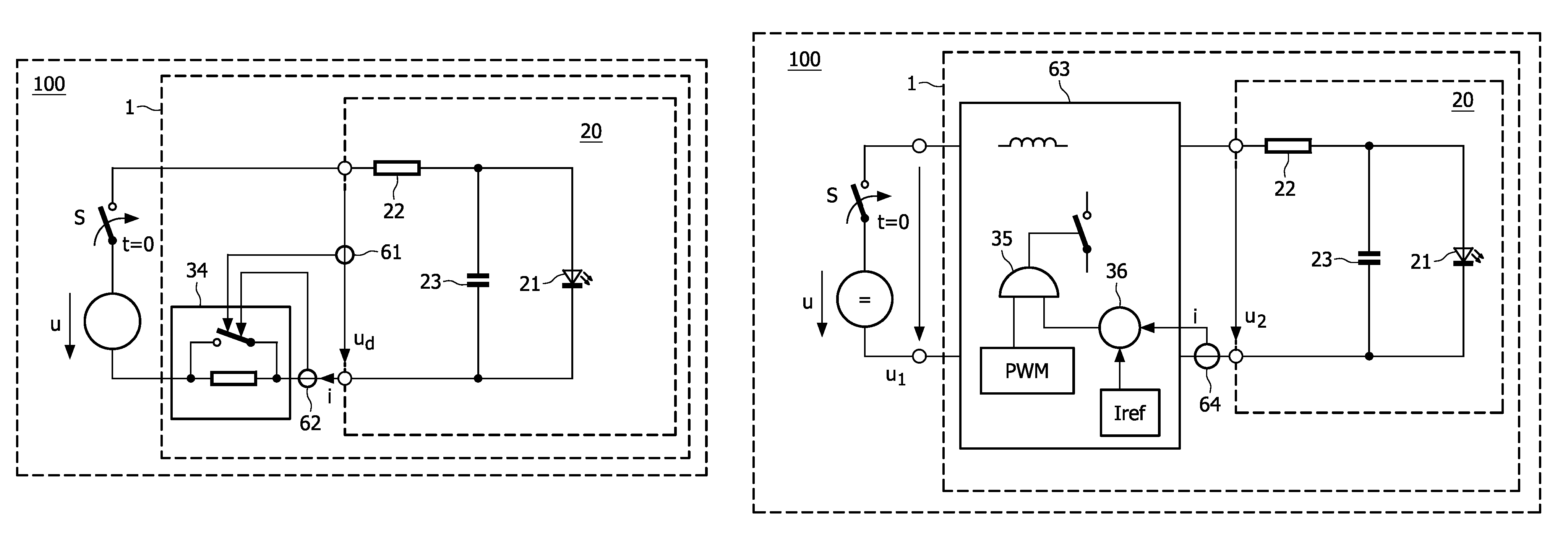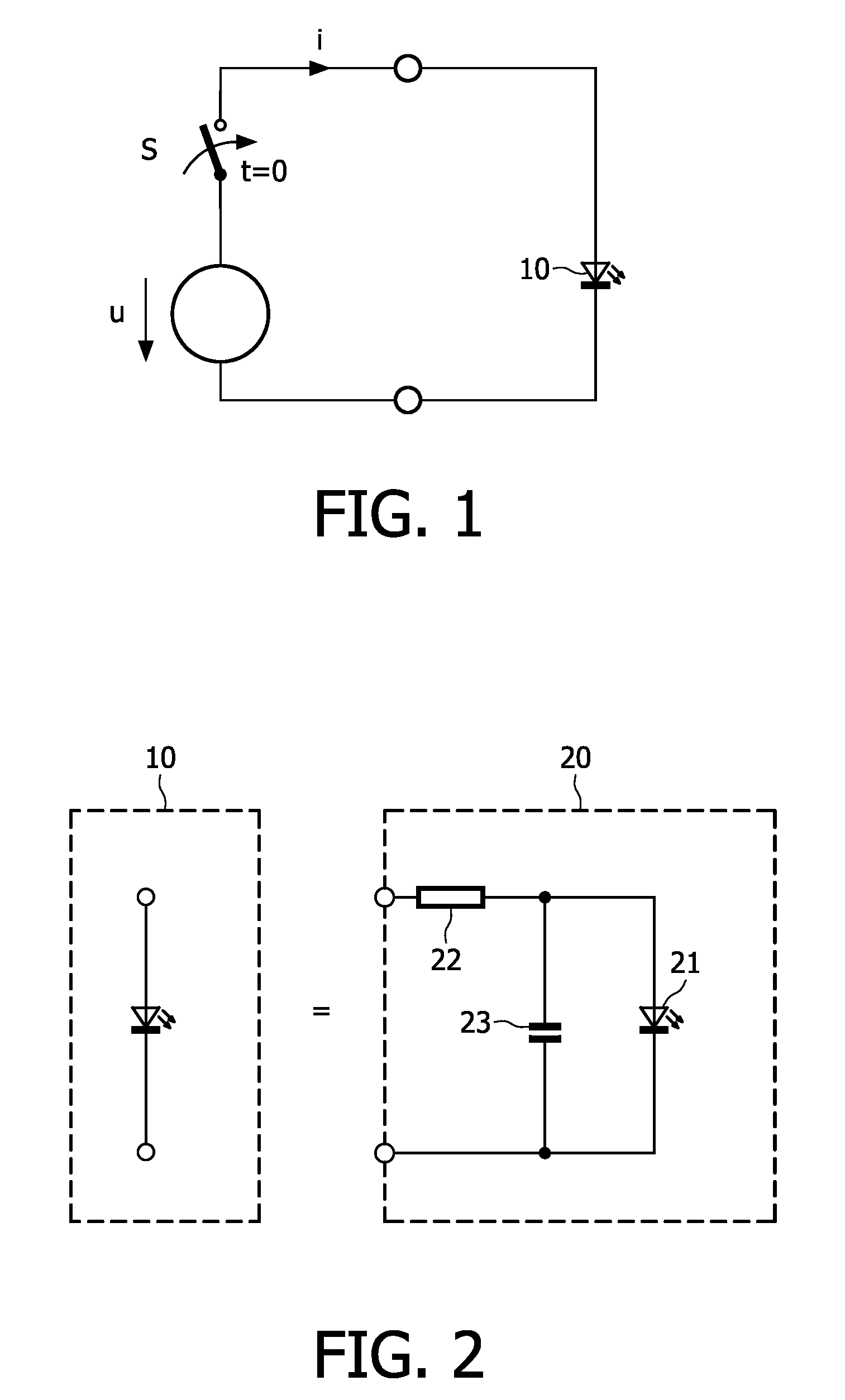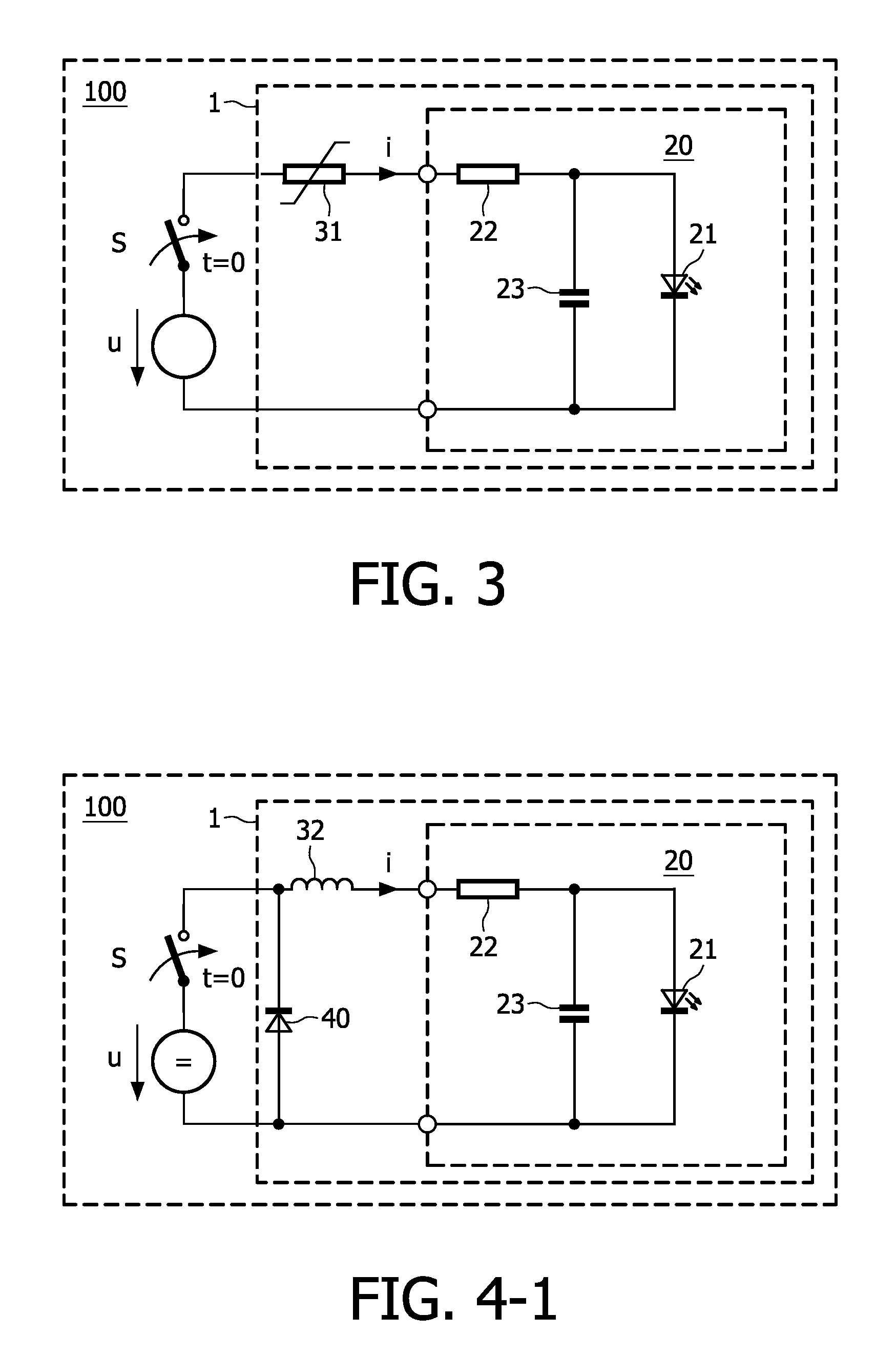Organic light emitting diode arrangement
a light-emitting diode and organic technology, applied in the direction of electric variable regulation, process and machine control, instruments, etc., can solve the problem that high value may damage the organic light-emitting diode arrangemen
- Summary
- Abstract
- Description
- Claims
- Application Information
AI Technical Summary
Benefits of technology
Problems solved by technology
Method used
Image
Examples
Embodiment Construction
[0033]The organic light emitting diode 10 shown in the FIG. 1 is coupled to a source u,i for generating a voltage u and a current i via a switch S that is closed at a time t=0.
[0034]The equivalence 20 of an organic light emitting diode 10 shown in the FIG. 2 comprises a diode 21 coupled in parallel to a capacitor 23. The parallel diode 21 and capacitor 23 are coupled to a resistor 22 serially.
[0035]The device 100 according to the invention shown in the FIG. 3 comprises a first organic light emitting diode arrangement 1 according to the invention. This first organic light emitting diode arrangement 1 comprises the equivalence 20 coupled to the source u,i and switch S shown in the FIG. 1 via a negative temperature coefficient resistor 31.
[0036]The device 100 according to the invention shown in the FIG. 4 comprises a second organic light emitting diode arrangement 1 according to the invention. This second organic light emitting diode arrangement 1 comprises the equivalence 20 coupled t...
PUM
 Login to View More
Login to View More Abstract
Description
Claims
Application Information
 Login to View More
Login to View More - R&D
- Intellectual Property
- Life Sciences
- Materials
- Tech Scout
- Unparalleled Data Quality
- Higher Quality Content
- 60% Fewer Hallucinations
Browse by: Latest US Patents, China's latest patents, Technical Efficacy Thesaurus, Application Domain, Technology Topic, Popular Technical Reports.
© 2025 PatSnap. All rights reserved.Legal|Privacy policy|Modern Slavery Act Transparency Statement|Sitemap|About US| Contact US: help@patsnap.com



